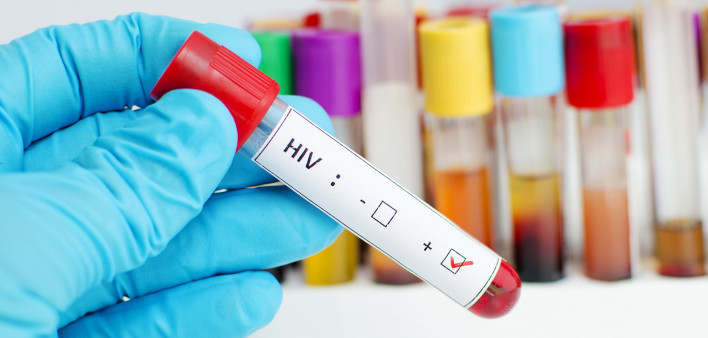An HIV outbreak around Duluth, Minnesota, first identified in March continues to spread, reports the Grand Forks Herald, and the situation has worsened with the emergence of a syphilis outbreak.
According to data from the Minnesota Department of Health, the number of new HIV cases within 30 miles of Duluth grew from 13 in March to 17. For context, in a typical year, five or fewer people would test HIV positive in the region. (Duluth, with a population of about 86,000, is a port city located along Lake Superior in St. Louis County, in northeastern Minnesota.)
The HIV transmissions are concentrated mostly among people who inject drugs, those who have experienced homelessness, men who have sex with men and people who exchange sex for money or other necessities.
Regarding the syphilis outbreak, the state health department reported that 24 people have tested positive this year in St. Louis County for the sexually transmitted infection, which can be cured once diagnosed. Last year, 28 people tested positive for syphilis; in 2019, that number was 12.
Harm reduction advocates claim that they’re unable to meet the demand for clean syringes and that the state health department has known about a spike in HIV cases since September 2019 and has been slow to respond.
Health officials with the state counter that they’re training individuals to do more rapid HIV testing and to get harm-reduction supplies to the communities in need.
Nonetheless, obstacles remain to controlling the spread of HIV. Of note, health workers and advocates have focused much of their energy this past year on the COVID-19 pandemic, which has allowed HIV and other sexually transmitted infections to take hold. In addition, the general population is mostly unaware or apathetic about HIV.
Duluth isn’t the only area in the state to experience HIV outbreaks in recent years. According to a recent press release from the state health department, “an HIV outbreak was declared in Hennepin and Ramsey counties in 2020 with cases dating back to 2018, and another outbreak was declared in the Duluth area in 2021 with cases dating back to 2019. Minnesota’s outbreak-associated cases have risk factors consistent with the national outbreaks.” This means the people who tested positive usually fit into the categories mentioned along with the current Duluth outbreak, including injection drug users, gay and bisexual men and people who experience homelessness.
Overall, however, newly diagnosed HIV cases throughout Minnesota have dropped about 18% between 2019 and 2020, falling from 276 cases to 226. Nearly 70% of the new diagnoses were among people of color, and 84% of the total cases were among “people assigned male sex at birth,” according to the state health department.
The health department reminds people who are sexually active or at higher risk for HIV to get tested annually.
Would you like to get a free STI or HIV test mailed to you? Several organizations are providing them. For options, see “HRC Teams With Six LGBTQ, Black and Latino Groups to End HIV,” “Get Tested for HIV and STIs at Home for Free,” the Ask POZ column “How Can I Find Out If I Have HIV?” and the POZ Basics page HIV Testing 101.
Duluth isn’t the only STI hot spot in the nation. For more, see “Sexually Transmitted Infections Reach Record High for 6th Year in a Row” and “The Roaring Twenties Are in Full Swing,” in which gay POZ blogger and activist Peter Staley notes that “while PrEP and U=U [Undetectable Equals Untransmittable, meaning people on treatment with an undetectable viral load cannot transmit HIV sexually] will continue to reduce our community HIV viral load, other STIs are about to soar.”







Comments
Comments